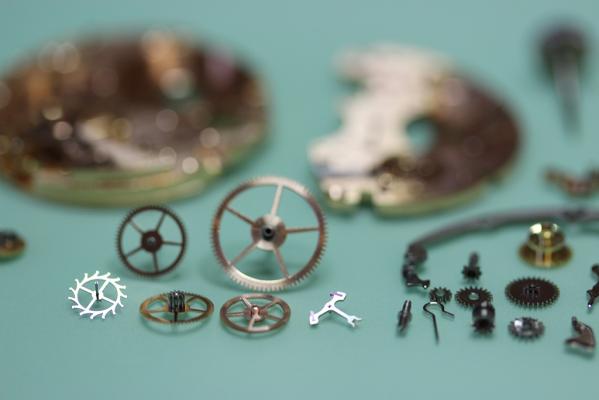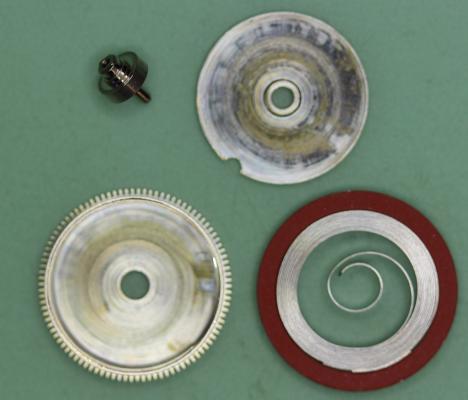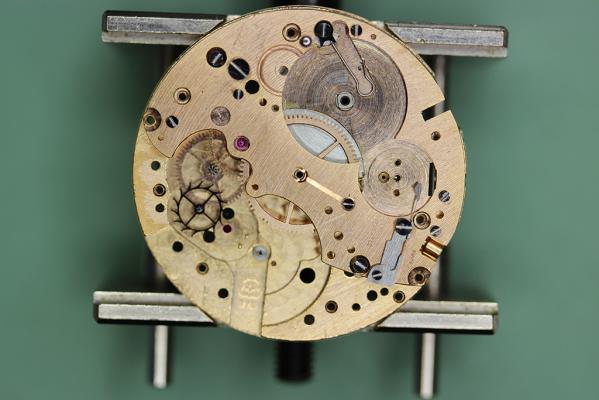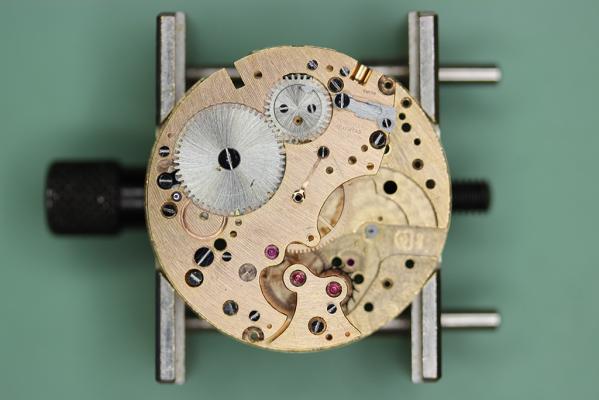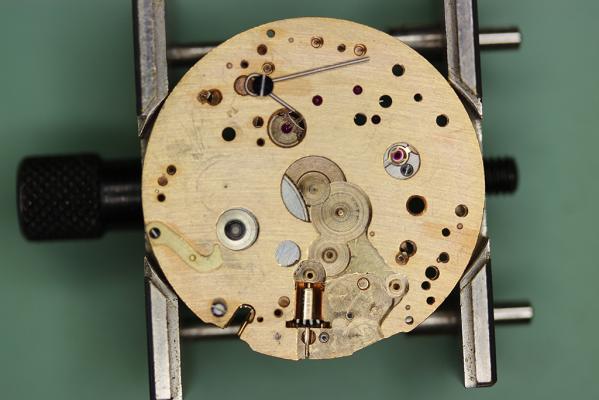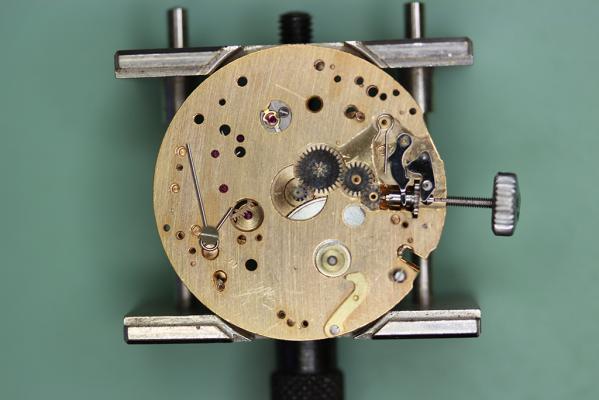Search the Community
Showing results for tags 'venus 178'.
-
A few months back, I purchased online this Breitling Navitimer for a fair price despite the fact that the watch was non-functioning at the time. I did this without seeing the movement which was a bit of a risk as there was the possibility the insides were rusted out, but the price was right and the I figured I could resell the case and dial if the rest turned out to be a disaster. Things looked bad when I received the watch as it wouldn't run at all and the pushers were jammed. I noted on inspection that the dial didn't sit flush either which caused me quite a bit of concern. Removing the caseback revealed one of the case screws had broken off and gummed up the works. Extracting the screw head brought the watch back to life and allowed the chronograph to function properly as well. Knowing I would need to extract the remains of the broken screw from the plate in order to properly secure the movement and seeing that the watch clearly had not been serviced in a while, I added it to my queue. It would be a few months before I would have time to work on it, but I must admit to being anxious. I don't often work with watches of this vintage that aren't terribly weathered but the dial and hands here were in quite good condition. Removing these gave my heart palpitations but with a bit of patience and caution I was able to get to the engine without damaging any of the paint. The video Mark posted earlier of a Navitimer service was a quite a help also as I was a bit stumped when it came to removing the bezel. The watch movement is a Venus 178 which is a fine manual wind chronograph movement that was produced in the 1950's and 1960's. Contemporary chronographs movements would be the Valjoux 72 and Lemania CH27. Disassembly was pretty straight forward. The chronograph mechanism is bolted piecemeal to the barrel plate so each lever needed to be removed separately. I would remove each spring first to release tension then proceed with the removal of the accompanying lever. Each screw was then returned to its hole so that I wouldn't mix them up later. Pictures were taken throughout the process for reference. The dial side received the same treatment for the hour recorder and keyless works. I had assumed I would need to dissolve the broken screw in a bath of alum in order to remove it from the plate but found this not to be the case. Once the barrel plate was removed, enough threads poked above the main plate to allow me to grab it with my tweezers and slowly unscrew the remainder. I have an old L & R machine for cleaning movements, so the parts were separated and packed in small baskets before undergoing a cleaning in the appropriate solvent and rinse. The case, caseback, and pushers were cleaned separately in small ultrasonic cleaner. Since the shafts of the pushers are not the same length I snapped a pic before disassembly for later reference. Following cleaning, each piece was inspected under the loupe before reassembly. I can't stress the importance of this step! Reassembly was the reverse of disassembly. I referred heavily to the images taken during the disassembly process and also used the published technical sheets and representative Esemble-O-Graf. Before reassembling the chronograph the base movement was completed and properly adjusted. Despite having already procured a replacement, I reused the original mainspring as it seemed to have quite a bit of life still in it. My assessment turned out to be correct when I placed the base movement on the timegrapher and discovered the amplitude was fairly high. This is not a problem I've had before but since the watch had a full wind I felt there wasn't much need to replace the spring with a weaker one. The beat error was initially on the high side (3.1ms) but a bit of adjustment brought that down. I suppose I would be remiss if I didn't point out that adjusting the beat error was difficult as there is no beat corrector and the Breguet hairspring sits so low that it's difficult to see the position of the roller jewel. Assembly of the chronograph mechanism is laborious as each piece needs to be checked for movement and properly lubricated before moving on to the next. I had inadvertently mixed up a few screws on the dial said which added another hour of labor to the job as well. The toughest bit was the actuating lever for the hour recorder- it passes from one side of the plate to the other and likes to fall out when you try to thread the screw to secure it. Otherwise reassembly went as I hoped- no parts lost or left over! I cleaned the dial and slide rule with a bit of Rodico. The slide rule is set in the bezel before the crystal is dropped in. A new crystal was needed as well since the original was damaged beyond repair. Lastly, a replacement case screw was procured to reset the movement and a crystal press was used to reset the crystal and caseback. I added a black leather band as the expanding bracelet wasn't really my taste. For my next chronograph project I'm hoping for a Valjoux 72 movement or perhaps an Excelsior Park EP40. We'll see what comes along though.




